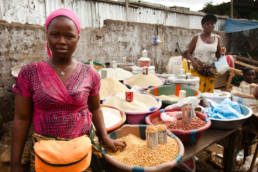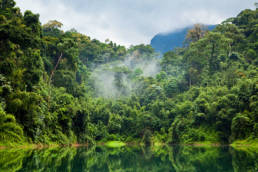Environment & Health
Health and environment are interconnected disciplines
The Objective
The purpose of the programme is to assist countries halt and reverse the adverse trends in the environment and health sectors and their broader links to other sectors in Africa. The project will have following specific objectives.

Provide a robust indicator beyond GDP, which reflects the wellbeing not only of present citizens, but also of future generations;

Provide a tool for government macroeconomic fiscal policy making, providing guidance on investment and other policy decisions
The Challenge
Physical well-being is a product of a clean and robust environment. A healthy population can, in turn, contribute to environmental conservation and sustainability efforts.
Human activity, however, continuously disturbs this balance.
Effectively, the degradation of ecosystems and their services caused by pollution, habitat change, overconsumption and exploitation of natural resources – in addition to climate change – can contribute directly or indirectly to illness and the subsequent loss of life. Such trends have been evident around the world ranging from Japan’s Minamata disease to the Chernobyl nuclear disaster in Ukraine.
Strategy A
Assess emerging environment & health issues, and establish a regional framework
Strategy B
Provide policy guidance on legislations and national action plans.
Strategy C
Promote capacity building in integrated environment & health management
Strategy D
Enhance the quantitative base on Environment and Health.
The effects of ill health arising from poor environmental conditions can spill into other sectors.
Health is considered a central element in achieving the MDGs (Millenium Development Goals). A physically, intellectually and emotionally healthy state can facilitate a person’s ability to learn, be productive and contribute to achieving the MDGs. Economic growth and development in all sectors of society is largely dependent upon a healthy population. For instance, in the African region the region’s GDP could have been an estimated USD 100 billion larger if malaria had been eliminated 35 years ago.
Health is closely related with life, which is a fundamental right, yet millions of people lose their lives from diseases every year. In 2004 the World Health Organization reported that, with 47.4 percent, Africa ranked the highest in terms of infectious and parasitic diseases compared to other regions. In 2007 the United Nations Development Programme reported that Africa ranked the highest in terms of mortality rates under the age of five. In sub-Saharan Africa, AIDS is said to be the leading cause of premature deaths compared to other regions of the world (GEO 4, UNEP, 2007).
Prüss-Üstün and Corvalán (2006) estimate that 24 percent of the global disease burden can be prevented through environmental interventions.
This is reason enough to seek effective solutions for Africans enjoy their right to a healthy life.
A business-as-usual attitude will not only hinder economic growth and development in the region and the world, but more importantly it will also cost lives as well as undermine the support systems of the world.
Presently environment and health responsibilities are mainly shared by agencies in those respective sectors. Better coordination is required between them to develop and implement effective programmes. Despite the magnitude of environmental risks to health, the capacity to assess and reduce these health risks is limited in many African countries. Sharing knowledge and experiences helps to manage widespread and shared issues. For this reason, a program facilitating knowledge sharing, long-term strategy development, and sharing of good practices will be of immeasurable assistance.
SDG’s
Delivery of Health Care Supplies for Remote Populations
Malawi has some of the highest HIV rates in the world, with 10,000 children dying from it yearly. Maternal mortality rates are at 634 deaths per 100,000 live births, and mortality under five years old is at 0.64%.
SDG’s
South Sudan Fighting Food Insecurity with the WFP
How the World Food Programme is enabling growers and consumers alike to access food markets with improved road networks in food-scarce South Sudan



















